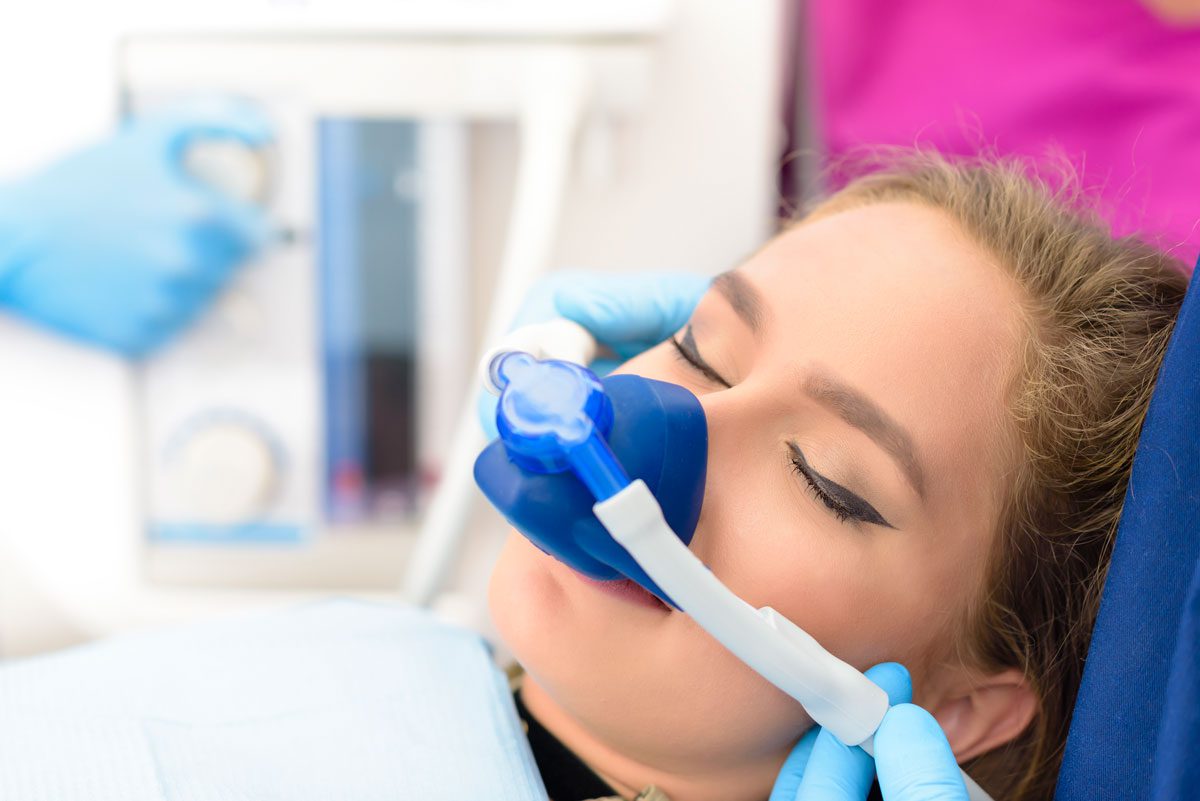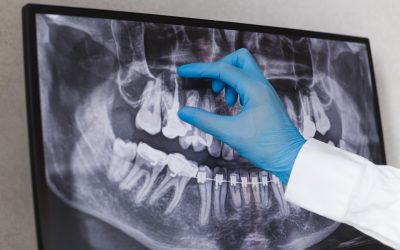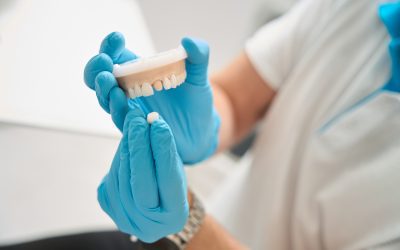Are you afraid of the dentist? If so, you might have heard about sedation dentistry as a solution. What is sedation dentistry?
Dental professionals use sedation dentistry to help patients feel calm and at ease during dental procedures. It involves administering moderate sedation, allowing the patient to feel relaxed and carefree without being fully asleep. This type of dentistry is particularly beneficial for those who suffer from dental anxiety or need to undergo complex or lengthy procedures, as it makes the experience more comfortable and less stressful.
Different types of sedation are used in dentistry, depending on the patient's needs and the dental procedure being performed. Some common forms include oral sedation, nitrous oxide (also known as “laughing gas”), and intravenous (IV) sedation. The primary goal of these sedation methods is to ease the patient's anxiety and make the dental procedure more manageable while ensuring the patient remains conscious and able to respond to the dentist's instructions.
What is Sedation Dentistry?
Sedation dentistry is a dental practice that focuses on relieving stress and pain for patients during procedures by using various types of sedation. It can be helpful for individuals with dental anxiety or those who need to undergo extensive dental work. This section will discuss the different types of sedation and administration methods.
Types of Sedation
There are generally three main types of sedation used in dentistry:
- Laughing gas: Also known as nitrous oxide, this inhaled sedative helps patients relax during dental procedures. It is a mild form of sedation and wears off quickly after the gas is removed, allowing patients to drive themselves home after treatment.
- Oral sedation: This method involves taking a pill, usually a benzodiazepine, to induce a mild to moderate level of sedation. It can help calm patients and alleviate anxiety but may also cause drowsiness.
- IV sedation: Intravenous sedation administers anti-anxiety medication directly into the bloodstream, allowing for a more controlled and deeper level of sedation. It is often used for patients with severe anxiety or those undergoing lengthy procedures.
Methods of Administration
Each type of sedation requires a different method of administration:
- Inhalation: Laughing gas is administered through a nosepiece, allowing the patient to inhale the sedative throughout the procedure. The dentist can carefully control the amount of gas given to the patient, adjusting as needed to ensure comfort.
- Oral: Oral sedation is taken in pill form, usually about an hour before the dental procedure. The medication can produce varying levels of sedation depending on the dosage.
- IV: For IV sedation, a qualified dentist or anesthesiologist will insert a small needle into the patient's vein, usually on the hand or arm. The medication is administered directly into the bloodstream, allowing quick and controlled sedation levels.
Each method has its pros and cons, and the choice of sedation will depend on the specific needs and preferences of the patient and the type of dental procedure performed.
What is Sedation Dentistry? The Benefits
Sedation dentistry offers multiple advantages to patients undergoing dental procedures, particularly those experiencing anxiety, fear, or pain. In this section, we explore the benefits of sedation dentistry, including reducing anxiety and fear, providing pain relief, and improving patient cooperation.
Reducing Anxiety and Fear
One of the primary benefits of sedation dentistry is its ability to ease anxieties and phobias that patients may have about dental procedures. Many people experience anxiety or stress when visiting the dentist, which can result in avoiding necessary dental care. Sedation dentistry helps patients relax, making their dental visits smoother and more comfortable.
Providing Pain Relief
Another significant advantage of sedation dentistry is the provision of pain relief. Although dental sedation does not directly address pain management, it helps patients feel minimal to no pain during dental procedures. This can be particularly helpful for patients undergoing more invasive treatments or those with lower pain tolerance.
Improving Patient Cooperation
Patient cooperation is critical for successful dental procedures; sedation dentistry can help. When patients are calm and relaxed, dentists can work faster and more efficiently, potentially reducing the number of appointments needed for treatment. Additionally, easier patient management can improve treatment outcomes and a more positive overall dental experience for patients and dental professionals.
Safety and Precautions
Choosing the Right Sedation Level
Sedation dentistry involves using medication to help patients relax during dental procedures. To ensure safety, choosing the appropriate level of sedation is essential according to the patient's needs and procedure complexity. There are various sedation levels, including minimal sedation, moderate sedation, deep sedation, and general anesthesia. An experienced and trained professional will recommend the most suitable sedation level based on a patient's medical history, treatment requirements, and anxiety level.
Monitoring Patients
A crucial safety aspect of sedation dentistry is monitoring patients during the procedure. Qualified dentists are responsible for continuously monitoring patients' vital signs, including blood pressure, heart rate, and oxygen levels. Modern monitoring equipment and well-trained staff help reduce risks and significantly improve the patient's well-being.
Moreover, dental professionals should follow strict guidelines when administering sedation medications, ensuring a wide safety margin and no chance of loss of consciousness.
Post-Procedure Considerations
After the dental procedure, patients may still be under the influence of sedative medications. The dental team needs to provide clear post-operative instructions, including rest, hydration, and refraining from activities requiring focus or coordination.
Patients undergoing sedation dentistry should arrange for someone to drive them home and monitor them for the first few hours after the procedure to ensure their safety.
Candidates for Sedation Dentistry
Medical History and Conditions
Sedation dentistry is suitable for patients who experience dental anxiety or have certain medical conditions. The primary candidates for sedation dentistry include:
-
- Patients with moderate to high dental anxiety, which may prevent them from seeking dental care.
- Individuals with a strong gag reflex, which can make dental procedures uncomfortable and challenging to perform.
- Patients with specific medical conditions or disabilities that make it difficult for them to remain still and comfortable during dental procedures.
Dental Procedures
Sedation dentistry may also be appropriate for patients undergoing specific dental procedures, such as:
-
- Those who require more painful or invasive dental work, as the sedation can help minimize discomfort and stress during the procedure.
- Patients who need longer or multiple procedures in a single visit, since sedation can help them remain calm and still throughout the session.
- Individuals receiving treatments that may produce anxiety or fear, such as extractions or root canals.
Ultimately, it is essential to consult with a dentist to determine if sedation dentistry is an appropriate option for your specific needs and circumstances. Colgate has a great article on sedation dentistry if you want to learn more.
What is Sedation Dentistry? Final Thoughts.
Sedation dentistry provides a valuable solution for patients who experience anxiety or fear when visiting the dentist. By utilizing various forms of sedation, from light oral sedation to IV sedation, patients can feel more relaxed and comfortable during dental procedures. This helps ease anxieties and leads to more efficient treatments, as dentists can work faster when patients are calm.
It is important to remember that sedation dentistry is not a one-size-fits-all solution. The type of sedation used will depend on the patient's needs, the complexity of the procedure, and the level of anxiety experienced. Dental professionals will carefully evaluate each patient and select the most appropriate form of sedation to ensure optimal outcomes.
While sedation dentistry can significantly improve the dental experience for many, it may not suit everyone. Patients with certain health conditions or concerns should consult their dentist to discuss alternative dental anxiety management methods. Ultimately, the goal is to ensure regular dental care and maintain good oral health, regardless of anxiety levels. By working with a dentist, patients can find the best solution tailored to their needs and feel confident in their dental care choices.
If you are considering sedation dentistry, we urge you to do more research and talk to your dental professional. Some additional great sources include:




